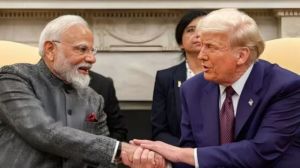NRI scientist’s PC won’t cost more than $250
Raj Reddy was fed up debating the problem of the digital divide and decided to do something about it.Reddy, a pioneering researcher in artif...

Raj Reddy was fed up debating the problem of the digital divide and decided to do something about it.
Reddy, a pioneering researcher in artificial intelligence and a professor at Carnegie Mellon University, plans to unveil at the end of this year his new project, called the PCtvt, a $250 wirelessly networked personal computer intended for the four billion people around the world who live on less than $2,000 a year.
He says his device can find a market in developing countries, particularly those with large populations of people who cannot read, because it can be controlled by a simple TV remote control and can function as a television, telephone and videophone.
Reddy is hoping his project — with backing from Microsoft and TriGem, the Korean computer maker, and in partnership with the Indian Institute of Science, the Indian Institute of Information Technology and researchers at the University of California, Berkeley — can prove that it is possible to bring IT to impoverished communities without depending on philanthropy.
Because his low-cost computer doubles as a TV and a DVD player, Reddy believes that he will be able to use it as a vehicle to take computing to populations that until now have been excluded.
‘‘I kept asking myself, ‘What would the device have to do for someone on the other side of the digital divide, to be desirable?’ ’’ Reddy said. The answer, he decided, was a simple device that would offer entertainment. Earlier this year he persuaded TriGem to supply prototypes of a fully equipped computer and Microsoft to support the project with a stripped down version of its Windows operating system.
This November, Reddy hopes to begin installing the first 100 prototypes of the PCtvt in India and possibly several other countries.
‘‘We needed three decades,’’ Reddy said, for those technologies to help developing nations.
One challenge Reddy faced was in persuading Microsoft to offer a version of its Windows software for far less than its commercial price.
Meanwhile, Reddy’s team is also working with social scientists to determine the effect that access to this technology has on communities. —(NYT)





- 01
- 02
- 03
- 04
- 05


























